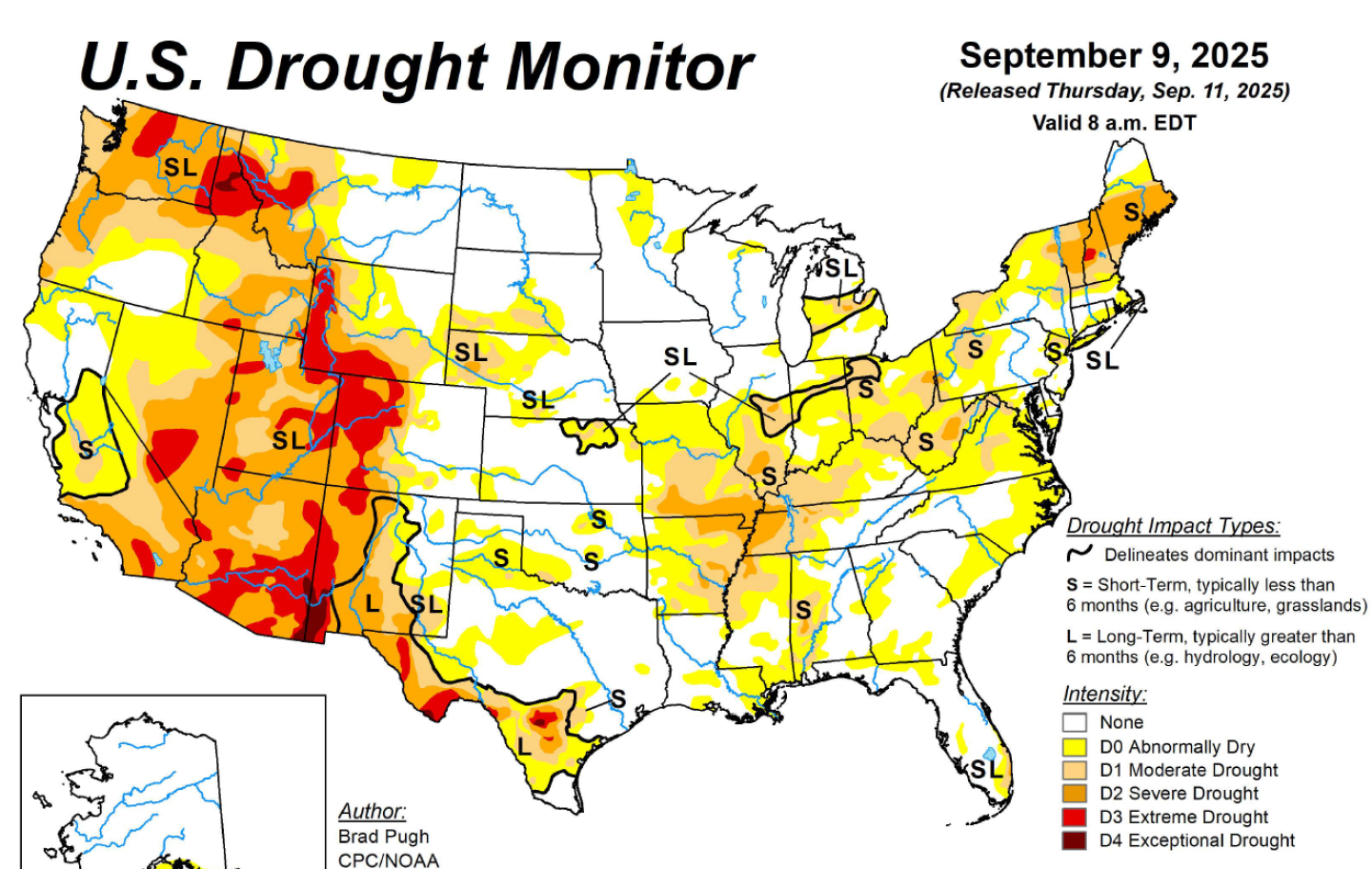If you’re wondering whether you need to harvest soybeans soon, the answer is yes – maybe even this week – according to Farm Journal Field Agronomists Ken Ferrie and Missy Bauer.
The weather pattern that has set in across much of the Midwest is resulting in a rapid drydown of soybean crops, advancing moisture losses in the beans (seeds) faster than what many farmers might be anticipating.
The U.S. Drought Monitor released last Thursday, Sept. 11, reports nearly one-fourth (22%) of all soybean acres are experiencing some level of extreme dryness or drought.
Because drydown is going quickly, Ferrie and Bauer are concerned growers are going to wind up harvesting soybeans with less moisture than desired, and that could be a huge negative for yield outcomes.
“I know a lot of guys are calling around, asking neighbors if they’re cutting beans and what the moisture level is, but I wouldn’t wait,” Ferrie says. “This is the year when cutting 12%, 13% soybeans is a lot better than the 8% beans I think we’re going to potentially deal with.”
Want to know why it’s so dry? Check out this video with U.S. Farm Report’s Tyne Morgan — Drought Conditions Intensify: What is Causing This Problem?
Understand The Factors That Contribute To Yield
There are three components to soybean yield: pods per acre, beans per pod and the size of the beans (seed). At this point in the growing season, final soybean yield is being driven by the seed size and weight.
Weather can play a huge role in the development process late-season. If you have favorable late-season temperatures and rainfall, that can create larger seed weights by extending the seed-fill duration.
Conversely, late-season disease or drought – like what is underway now in many areas – can terminate the seed-fill period prematurely and reduce seed size, explain Ryan Van Roekel, former Pioneer field agronomist, and Larry Purcell, University of Arkansas professor emeritus of crop physiology.
The goal with harvesting the crop at a higher moisture level now is to preserve bean seed size (weight).
With Heavier Soybeans, Fewer Are Needed Per Bushel
A standard bushel of soybeans weighs 60 pounds at 13% moisture content. You typically need between 2,500 to 3,500 soybeans to make a pound. Bauer is concerned the number of beans required per pound will be on the higher end this season.
“It’s so dry here (in southern Michigan), the longer we wait the more the seed size is going to suffer,” she says. “We’re going to have a lot of 3,000 or more seeds per pound coming in. It’s going to feel like we’re harvesting BBs.”
Granted, you can err on the other side – harvested soybeans can contain too much moisture, resulting in discounts by buyers. But that’s unlikely to be the case this season.
“With this heat, these beans are going to dry really fast, and we don’t want that to result in us giving up a chunk of yield,” Bauer says.
Ferrie’s advice is to combine soybeans now, even if you don’t think you should be combining them, and that likely means you need to go through fields at slower speeds.
“You’re going to have to deal with a little bit of noise and thumping, and it’s probably going to be easier on the guys with the belted head, versus the auger heads. But push this bean harvest,” Ferrie advises. “Don’t wait for the field to look like it’s right to harvest. The beans might be tough cutting, but keep cutting.”
Your next read: Six Sources of Soybean Loss and How to Address Them


